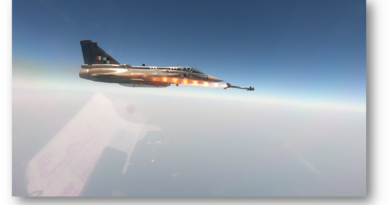Ahir Regiment
Context:
Members of the Ahir community have been on an indefinite protest in Gurgaon, demanding the formation of an Ahir regiment in the Indian Army
History of the Ahirs in the Indian Army and Kumaon Regiment:
Ahirs are recruited in the Indian Army in various regiments including fixed class regiments (one or more castes in fixed numbers) like Kumaon, Jat, Rajput, and mixed class regiments (of all castes).
- Ahirs were initially recruited in sizable numbers in the 19 Hyderabad Regiment, which was the predecessor of the Kumaon Regiment.
- This regiment had earlier mainly recruited from Rajputs from Uttar Pradesh and Muslims from the Deccan plateau among other castes.
- In 1902, the regiment’s links with the Nizam of Hyderabad were severed after Berar was converted into a permanent base for the British.
- In 1922, in another reorganisation of the Indian Army, the composition of the 19 Hyderabad Regiment was changed, and Deccan Muslims were removed from it.
- In 1930, the class composition was changed again to one company each of Kumaonis, Jats, Ahirs, and Mixed Class.
- On October 27, 1945, permission was given to change the name of the Regiment, and it became 19 Kumaon. Following Independence, it was named the Kumaon Regiment.
13th Battalion of the Kumaon Regiment:
The 13th Battalion of the Kumaon Regiment, which gained fame in Rezang La, was the first battalion to be raised after Independence.
- It was raised in October 1948 with Kumaonis and Ahirs in equal proportions.
- In 1960, after the transfer of Ahirs from 2 Kumaon and 6 Kumaon, 13 Kumaon became the first pure Ahir battalion in the Kumaon Regiment.
Role of Ahirs in the Battle of Rezang La:
The Ahirs of 13 Kumaon deployed at Rezang La in Eastern Ladakh resisted the Chinese attack on them until almost the entire company of 120 troops had been wiped out.
- The battle was fought on November 18, 1962 at a height of 17,000 feet.
- The ill-equipped troops of the Charlie Company of 13 Kumaon under the command of Major Shaitan Singh fought ferociously against hundreds of attacking Chinese soldiers.
- Out of the 117 troops killed, 114 were Ahirs, and only three survived with serious injuries.
- The killed Ahir troops belonged to the Rewari-Mahendragarh belt of Haryana.
- When the winter ended and the bodies of the dead soldiers were recovered, many were found holding on to their weapons in the trenches after their ammunition had run out.
Major Shaitan Singh was awarded the nation’s highest gallantry award, Param Vir Chakra, posthumously, eight soldiers received the Vir Chakra, and several others were awarded the Sena Medal and Mentioned-in-Despatches.
What is the genesis of the demand for an Ahir Regiment?
- The Ahirwal region, which includes the southern Haryana districts of Rewari, Mahendragarh, and Gurgaon, and is associated with Rao Tula Ram, the Ahir hero of the revolt of 1857.
- This region has traditionally contributed soldiers to the Indian Army in large numbers.
- The community was brought into national limelight after the story of the bravery of the Ahir troops of Haryana in the Battle of Rezang La in 1962. The Ahirs of 13 Kumaon deployed at Rezang La in Eastern Ladakh resisted the Chinese attack on them until almost the entire company of 120 troops had been wiped out. Out of the 117 troops killed, 114 were Ahirs, and only three survived with serious injuries. The killed Ahir troops belonged to the Rewari-Mahendragarh belt of Haryana.
- Members of the community have long argued that the Ahirs deserve a full-fledged Infantry Regiment named after them, not just two battalions in the Kumaon Regiment and a fixed percentage in other regiments.
What has been the Army’s response to the demand?
- The Army has rejected the demand for any new class or caste based regiment.
- It has said that while the older regiments based on castes and regions like the Dogra Regiment, Sikh Regiment, Rajput Regiment, and Punjab Regiment will continue, no new demands on the lines of an Ahir Regiment, Himachal Regiment, Kalinga Regiment, Gujarat Regiment or any tribal regiment would be entertained.
- Military does not subscribe to the colonial theory of ‘martial races’, which led to the creation of single class or caste regiments, the regimental system has stood the test of time, and has acquired an Indian nationalist character.
Source: Indian Express
You can find many articles on SECURITY (part of GS III) in our website. Go through these articles share with your friends and post your views in comment section.



